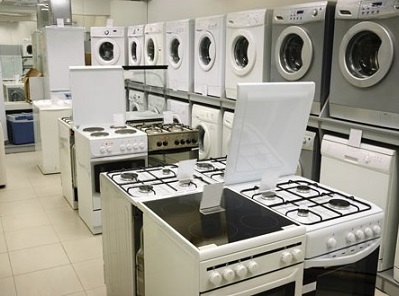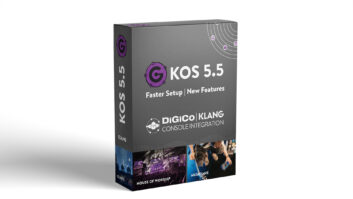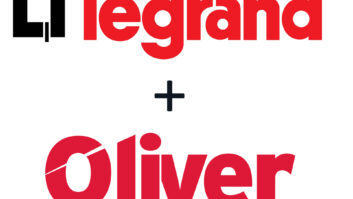
NEW YORK — Fueled by a housing market comeback and greater macroeconomic equilibrium, major appliance sell-through continued to rebound last year, far outpacing retailers’ flat results in CE.
Indeed, the country’s 50 largest white-goods dealers posted a cumulative 5 percent increase in majap sales in 2014, bettering the overall marketplace by 2 percentage points.
But despite the gains, industry growth cooled from 2013, when majap retail sales rose 9 percent in a consumer snap-back from six years of mixed demand.
The latest tally comes courtesy of TWICE market research partner The Stevenson Company, which helped produce this first-ever TWICE Top 50 Major Appliance Retailers Report.
[An expanded PDF version of the report featuring additional channel breakout charts is available for purchase here.]Regular readers may recall that in past years the rankings extended to the 100th place, where annual dealer sales typically fell below the $10 million mark. This year, we’ve narrowed our radar to concentrate on businesses with annual sales of $30 million or more, as industry consolidation puts more volume in the hands of fewer players.
And just as a reminder, the data reflect retail (vs. builder channel) sales of major appliance categories, as delineated by the Association of Home Appliance (AHAM), meaning that with the exception of countertop microwave ovens and room air, they exclude all small appliances and floor care.
Who’s On First?
The 800-pound gorillas of white goods are well-known to most, although many were surprised by last year’s ascendancy of Lowe’s to the No. 1 spot. The upset, which resulted from Sears’ spin-off of its Hometown Stores business, relegated the long-reigning king of appliances to second-place status.
The lineup, at least through the top nine berths, remains unchanged this year, with Lowe’s, Sears, The Home Depot, Best Buy and Sears Hometown Stores comprising the Top Five.
Breaking into the ranks of the top 10 was Costco, whose narrow assortment of appliance offerings, like most of the categories it carries, varies from season to season, and often month to month. Costco’s rise was fueled by a nearly 18 percent increase in white-goods sales, and tepid results at BrandsMart USA (No. 12), the Florida chain that relinquished its 10th-place standing. BrandsMart also made way for Abt Electronics, Chicago’s CE and appliance megastore, which barreled its way to 11th place from 13th. BrandsMart may slide yet again in next year’s rankings following its exit from the Atlanta market.
Other gainers included Nebraska Furniture Mart, which rose to 13th place from No. 15 without the benefit of its new Dallas location, and Midwest home-improvement chain Menards, which leap-frogged Best Buy’s Pac Sales subsidiary (No. 15) to take the 14th place on the chart.
Who’s Hot, Who’s Not?
For many, 2014 was a robust year for major appliances, with double-digit percentage gains dotting the Top 50 rankings. Some, like Best Buy (up 11 percent despite 44 fewer stores), and No. 17 Amazon.com (ahead a chart-topping 46 percent), drove the increases through a greater focus on the category. Best Buy, for example, has employed a new labor model in majaps, remerchandised its assortment with a bias toward Samsung, and is opening in-store Pac Sales departments at an accelerated clip.
For others, like ninth-place Conn’s (up 27 percent), growth was fueled by new store additions, which totaled 11 new Home Plus locales across multiple new markets for the Texas-based chain.
Still others, noted Stevenson research VP Bob Tancula, won or lost by luck of location, with those situated near high-income tech hubs enjoying the fruits of residents’ labor.
Conversely, companies like BrandsMart (down 1 percent) contracted along with their markets, which in this case reflected its still shaky Southeast Florida turf.
The biggest decline on the majap Top 50 was seen at Target (No. 18), a major mover of room air and microwaves, which was down 11.5 percent amid a weak year for AC; changes in senior management and merchandising strategy; and fallout from 2013’s notorious fourth-quarter credit card hack.
Who’s The Man?
As noted earlier, major appliance retail share continues to consolidate around the largest of the industry’s dealers. The top five players, for example, saw their cumulative sales increase from $19 billion to $20 billion, while revenue rose by well more than $100 million for those ranked six through ten.
In contrast, that same $100 million increase was spread out among the 15 dealers ranked 11th through 25th, while sales for those ranked 26 through 50 (with the distinction of 50th place going to Santa Clara, Calif.’s University Electric), were flat.
Sliced and diced by channel, the numbers once again show share shifting to the national chains. Home-improvement centers, which at 41.2 percent of Top 50 sales represent the largest channel of distribution for major appliances, increased their share by 1.2 percent, while appliance specialty stores saw their piece of the pie shrink 5.4 percent year over year, to 8.8 percent of sales.
Conversely, multiregional CE and majap dealers, led by Best Buy and 29th place Fry’s, grew their collective share by 5.4 percent, to 9.8 percent of all sales, representing the third largest distribution channel.
Meanwhile, despite the sales declines at Target and a 1 percent slip at No. 7 Walmart, the mass-merchant channel – the industry’s second largest class of trade – enjoyed a 2 percent sales increase, thanks to Sears’ 3.2 percent gain and a 3.1 percent improvement at No. 24 Kmart, owing to its expanded appliance assortment.
Methodology
The TWICE Top 100 Major Appliance Retailers Report ranks the leading domestic white-goods dealers by sales of major appliances for the 2014 calendar year.
Sales figures are based on information that was supplied by retailers responding to a survey by TWICE and its research partner The Stevenson Company. Absent their input, estimates were developed from Stevenson’s internal market tracking surveys (TraQline) and industry sizing based on wholesale shipment figures from the Association of Home Appliance Manufacturers (AHAM), average retail price points by products, housing market data and other sources.
All estimates were further refined and submissions vetted using public filings with the Securities and Exchange Commission (SEC), TWICE industry analyses, financial analysts’ reports, published data and other sources. Sales figures for 2014 were then compared to 2013 sales tallies and adjusted if necessary to more closely track industrywide revenue growth.
Major appliance dealers must meet the following criteria to be considered for inclusion:
• sell new products directly to consumers;
• have brick-and-mortar retail stores or a significant online presence;
• sell major appliances as one of their principal lines of business;
• do not sell solely to the builder channel or to multifamily dwellings; and
• sell at least one of the following major appliance categories as defined by the Association of Home Appliance Manufacturers (AHAM): washers, dryers, refrigerators, freezers, dishwashers, ranges, cooktops, wall ovens, microwave ovens, room air conditioners and dehumidifiers.
Sales are considered to be the revenue received for merchandise only, and which is sold solely through the retail channel.
Stevenson, based in Louisville, Ky., has served the majap industry for the past 20 years, more recently adding CE to its service portfolio. Its TraQline syndicated quarterly survey of 150,000 shoppers measures retail purchases of consumer durables, and provides estimates of unit and dollar market share and other key data points.













